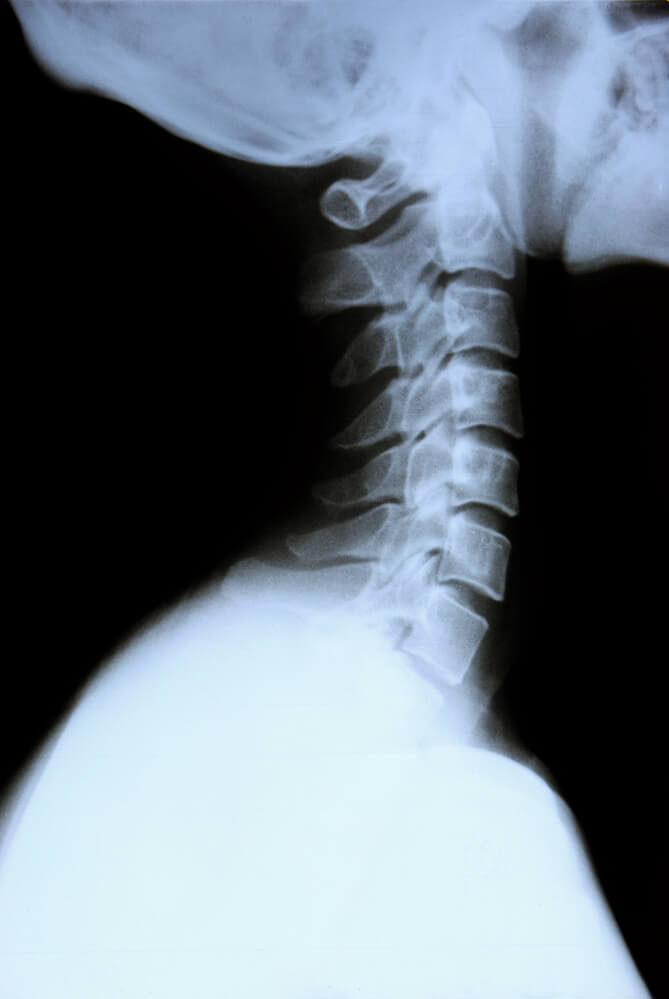
The neck region is comprised of the cervical spine. This area is a complex and well-structured layout of bones, nerves, muscles, ligaments, and tendons. The cervical spine is also delicate as it houses the spinal cord.
This article will help you understand the structures and functions within the cervical region.
The cervical vertebrae (bones in the neck) are the first portion of the vertebral column starting from the base of the skull down to the upper part of the back. This part comprises the first seven vertebrae and is named C1 to C7, respectively. The natural curve of the cervical vertebrae is a C-shape to properly support the head. This shape provides some 'spring-like' action to allow the forces to be distributed more equally in the neck region.
Traveling inside the vertebral column is the spinal cord, with branches coming out of each section of the vertebra. Each section holds a spinal nerve responsible for the movement and sensation of a part of the body. Below is a detailed description of the spinal nerves within the cervical spine.
C1, C2, and C3 - control the head and neck movement, including backward, forward, and sideward motions. The C2 dermatome helps provide sensation within the upper part of the head, while the C3 dermatome provides sensation on the side of the face and the back of the head.
C4 - helps control the upward movement of the shoulders along with the C3 and C5. This nerve also helps control the diaphragm (the muscle for breathing). C4 dermatome provides sensation to some parts of the neck, shoulders, and upper part of the arms.
C5 - controls the deltoid muscle, which allows the bending of the elbows and the rotation of the forearm. The C5 dermatome provides sensation for the outer part of the upper arm down to nearly the elbow.
C6 - helps control the extensors of the wrist (the muscles responsible for the forward and backward bending of the wrists) and also provides innervation to the biceps. The C6 dermatome supplies the sensation of the thumb side of the hand and forearm.
C7 - controls the tricep muscle (the large muscle behind the arm that straightens the elbow). The C7 dermatome covers the back of the arm towards the middle finger.
In between each vertebra are a sponge-like cushion that allows for the flexible movement of the column. These cushions are called intervertebral discs, and the cervical spine includes six intervertebral discs in between each bone from C1 to C7. Aside from allowing movement, the intervertebral discs also support each bone to prevent them from rubbing against each other.
Each intervertebral disc contains the following structures:
Outer layer - This is a tough exterior called the annulus fibrosus, which helps distribute the force and weight within the bone. This part is made of collagen and helps protect the inner layer.
Inner core - The inner core is a soft jelly-like interior and is called the nucleus pulposus. This structure is made up of mucoprotein and provides flexibility to the structure.
The discs need to be hydrated to maintain their functionality. Over time, as the person ages, these discs become less flexible and hydrated; therefore, conditions such as hernia occur.
The muscles within the neck support the structure and allow movement just like any other muscle within the body. These muscles also protect the bony structures and provide the shape of the neck. The ligaments and tendons help the muscles attach to the vertebral bones and support the placement of the muscles.
Our cervical spine is a complex layout of bones, nerves, discs, muscles, ligaments, and tendons. All of these structures help in movement, while some aids in sensation and protection. The cervical spine also houses a portion of a vital part of the body, which is the spinal cord. Care for the neck is essential to maintain the function of this part. Dr. Brent Ungar, a chiropractor in Canton OH specializes in helping patients with pains and problems within the neck region. Contact us now if you need help with any conditions within your cervical spine.
References
https://www.spine-health.com/
https://www.ncbi.nlm.nih.gov/
https://www.aans.org/
https://my.clevelandclinic.org/